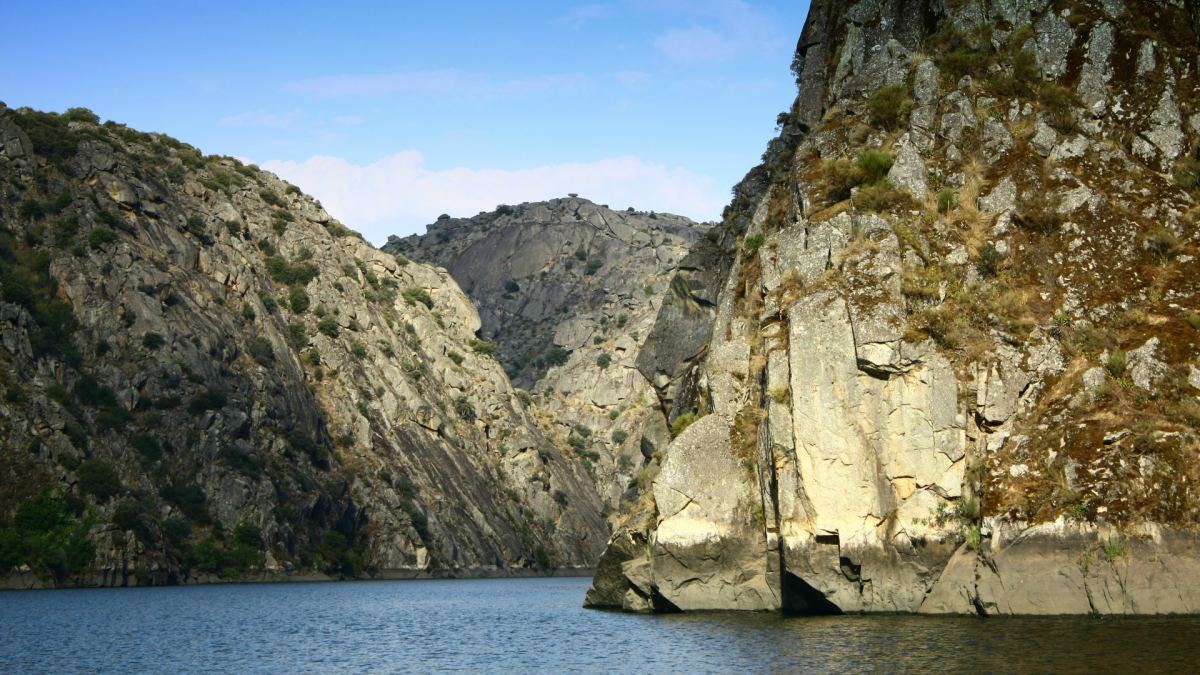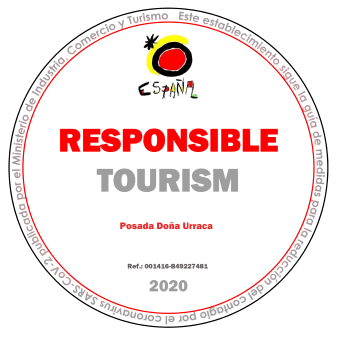Arribes Wine Route.
What is behind the accommodations, the wineries and wine cellars, the restaurants and stores or the leisure companies? There are people. People who believe in their territory, who get up early to promote it and make those of us from abroad come back again and again and feel at home. Between Zamora and Salamanca, we invite you to discover a route made by and for people, the Arribes Wine Route.
From the Duero, that blue rope from which we pull Spanish and Portuguese in an imaginary game, hang the villages along the Arribes Wine Route, one of the best gifts we can give ourselves. It has it all: a river that looks like a god lying down, granite canyons and metamorphic rocks that give name to the landscape -those arribes that in Salamanca are read in feminine and in Zamora in masculine-, a different and unique wine, with the personality that gives the grape variety Juan García, a gastronomy with body and soul and, above all, hosts that perfect our experience with their good work and kindness.
Along the way, we will meet restless people who one day decided to change of scenery and settle here, and we are not surprised at all. Because here beauty is not hidden, it is not necessary to look for it as in a gymkhana; on the contrary, it invites us to look at it in front of us, serene and joyful.
Our route, which we will trace from north to south, from Zamora to Salamanca, runs through the Arribes del Duero Natural Park, an area of great scenic value to the west of both provinces. The river does not take its eye off its more than one hundred thousand hectares and, in the cliffs and rocks of its margins, a retinue of vultures, eagles and Egyptian vultures watch over us. To familiarize ourselves with these postcards of arribanzos and curtains -dry stone walls that separate the boundaries-, we have two options: to stay and live in them or dust them off whenever we can, to feel their paths under our feet and uncork their bottles of wine until we build our own story.
THIS IS ABOUT PEOPLE
So, one day we went to Gamones to meet Nuria and Delfín, she a ceramist and he a publicist, who, on a trip about twenty years ago, fell in love with the Zamoran region of Sayago and, without hesitation, they moved all their belongings to this town. Delfín, a pioneer of teleworking, set up on his own, and Nuria opened the Numa Cerámica workshop (www.numaceramica.com), where she has been working magic with clay under the influence of a land that inspires her and never runs out. She accepts orders from individuals, seduces the best chefs, who plate their creations in the cosmos of crockery that comes out of her hands, and gives courses and workshops to laymen and professionals. It could be said that his work, more than a job, is a song of life and hope that reminds us that, without the conviction of a people in their future, any political action is vain. "There are only things that cannot be lost", wrote Carlos Pujol, and that is why Numa, Gamones, the region of Sayago and the Arribes del Duero can never be lost.
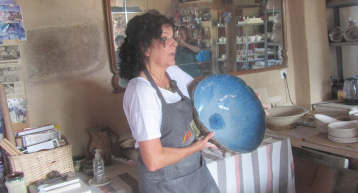
From Gamones we jump to Fariza, and in Fariza we meet other pioneers, these of organic farming. Alonso Santos and his family run the cheese factory La Faya (https://lafaya.es): first, second and, at the latest, third generation of artisans, who pamper each and every one of the cheesemaking processes and, moreover, enjoy telling about it. Since the eighties of the last century, when Alonso formed his first flock of sheep until today, with all the innovations introduced by his daughter Ángela, the extension has grown in quantity and quality, while the medals have been accumulating on his chest.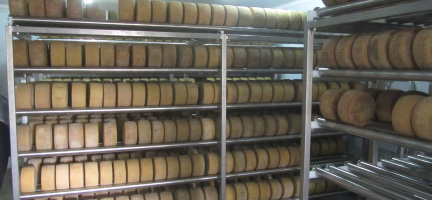
A third family story takes us to Formariz, in the same Sayago region. Here we stop to talk to José Manuel Benéitez and the "xefa" Liliana Fernández, owners of the winery El Hato y el Garabato (www.elhatoyelgarabato.com). We toast with them for their commitment to old vines -between eighty and one hundred and twenty years old- and for their ecological vision without pretensions of grandeur. After a youth of the most trodden, this couple settled here and assimilated the diversity that is consubstantial to the territory, which, if anything, is characterized by its amazing variety of soils and grapes. How is it possible so much richness in a Denomination of Origin that "fits" in just 272 hectares? In addition to Juan García, the varieties Bruñal, Bastardo, Tinto Geromo and Mandón, in reds, and Doña Blanca and Puesta en Cruz, in whites, delight our palate and invite us to continue exploring the region.
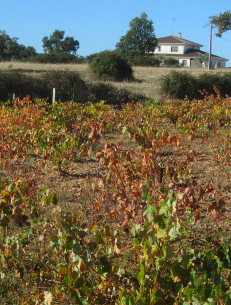
THE TOWN OF A THOUSAND WINERIES
From Formariz to Fermoselle is an 11 km drive, and, with the saddlebags on our backs, it is impossible to skip the stop, as it is presented to us as "the village of a thousand wineries". Most of them -there are 17 in operation, plus the Zorita hacienda, on the outskirts- were excavated in the rock, and, when visiting them, one feels a certain clandestine emotion, as if preparing to worship Bacchus in some catacombs. Cradle of the poet Juan del Encina and refuge of converts who continued to practice their faith in secret, Fermoselle, with its unique countryside of terraces and terraces, was the last stop of the Jewish exodus to Portugal. Its tangle of wineries (Zorita, Pastrana, Frontio, Romanorum...) is irresistible, and it would be just as irresistible even if we did not like wine -there is everything in the vineyard of the Lord-, both for its architecture of ashlar arches and for the oak barrels that cradle time in this petrified space.
After a guided tour of the town by Olvido Peños, creator of the Hidden Treasures route, we "inspected" two of them: Pastrana (www.bodegaspastrana.es) and Frontio. The origin of the former, which in optimal years produces some 14,000 bottles, with the Juan García variety as its flagship, dates back to 1760. For his part, Frontio's owner, Thyge Benned Jensen, makes it very easy for us with his disarming humanity and Spanish nom de guerre: Chus. In 2016, this Danish giganton settled in Fermoselle and bought some vineyards, with hardly any knowledge of the sector. Today he presides over the Regulatory Council of the Arribes D.O., works to widen the market and boasts of his organic elaborations, baptized with truly sparkling names (go, go and ask him). Like Liliana and José, like Nuria and Delfín, Chus listened to the voice of her vocation and, before such a force, there is no obstacle that is worth.
In the fifties of the last century, about four thousand people lived in Fermoselle; today there are only a thousand and a little left, and it is, nevertheless, the most populated municipality in the Sayago region. Through its cobbled streets, the "outsiders" cross paths with the "insiders" and listen to the echo of its Jewish quarter and the murmur of its churches and hermitages. And we all share the joyful bewilderment of a Dickensian antique store called La tienda de antaño (https://latiendadeantano.wordpress.com). What we find in this centenary bazaar we will hardly find anywhere else, and while Julia Sendín's explanations wander from Arribes wines to cheeses and oils, from chickpeas to almonds, we are spellbound by the old brass toys and the pieces of clay and wicker.
REST SO THAT TOMORROW...
In the town of Fornillos de Fermoselle, 15 km from Fermoselle, another entrepreneur, Piki, runs a finger-licking business: the Oh Saúco jam shop (www.facebook.com/ohsauco). After looking for her place in the world, Piki took root in this town of less than sixty inhabitants, and now not only sells its products in store and on-line, but also gives workshops to neighbors and has even delved into the doctrines of yoga. Organic lemons, local pumpkins and pears shape some of his elaborations and, since we are on a wine route, make room for his recipes of pear jam with wine or onion with wine, among others. We promise you will know what we mean when we talk about flavor.
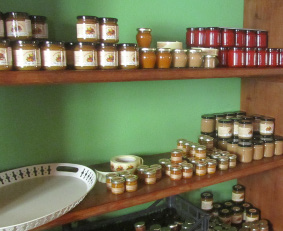
Perhaps, for a first day, the experience has been enough, although we are always left wanting more. But, anyway, if our eyes are already closed or we simply want to recharge our batteries, in Fornillos de Fermoselle we will find a perfect option, La Casa de los Arribes (https://lacasadelosarribes.es), four houses for full rental among gardens and with the friendly company of Zamorano-Leonese donkeys and Castilian black hens. In any case, the offer of beds is very wide throughout the territory, with rural houses, hotels, haciendas or inns such as Doña Urraca (www.posadadonaurraca.es). So as I said: a spoonful of jam and go to sleep.
AND THIS IS ABOUT LANDSCAPES
Nothing as inspiring as talking to people and being interested in what they do. Nothing like traveling looking for hands, looks and voices and finding, perhaps, a meaning to our own existence. But the Arribes Wine Route also requires us to put our eyes in panoramic mode and photograph the immensity of its horizons.
In this sense, on the Portuguese side, the pier of the International Biological Station (EBI) is the starting point of an unforgettable environmental cruise that has received all the institutional honors and the unanimous praise of its customers. From the formalization of the First Transboundary Cooperation Project in 1994 until today, the town of Miranda do Douro and the Zamora region of Sayago, in other words, Portugal and Spain, have strengthened their ties thanks to the good offices of their best ambassador, the Douro. The ships, whose tickets can be purchased on the website www.europarques.com, profess the faith of sustainable navigation and each year take thousands of passengers on a voyage of discovery that combines scientific dissemination and contemplation of the landscape between the canyons of the Douro. If we are lucky, they will "shoot" the gliding of griffon vultures, Egyptian vultures, Bonelli's eagles, golden eagles, black storks, black kites or king swifts. From the lichen cliff and until we descend again, we will have to pinch ourselves to convince us that the Arribes are not a dream.
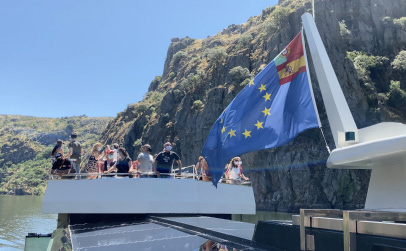
Then, we can return to Fariza, where we leave behind good and brave people, and approach the viewpoint of Las Barrancas, near the hermitage of the Castle. At our feet, the Duero canyon tells us, once again, that story of invisible borders and pressing links, with a geography determined by a judge-river that ruled that this was called Spain -for example, Cozcurrita- and that Portugal -for example, Freixiosa-. The binoculars will allow us to follow the flight of numerous birds over a vegetation full of pines and junipers.
The viewpoints are already a trend, and even fever, and that does not change. Perhaps the most popular is the Fraile, in the municipality of Aldeávila de la Ribera, in the province of Salamanca. Designed by HOLLEGHA architects, and inaugurated in April last year, this trampoline merges the creation of nature - the Arribes del Duero - and that of man - the Aldeávila dam - in the blink of an eye. When Spain was a huge movie set, David Lean shot several scenes from Doctor Zhivago here, and, more recently, the crew of Terminator: Dark Destiny traveled to this hydroelectric facility and put several villagers in front of the cameras. The life of fame!
Another dam, the Almendra dam or the Villarino waterfall, five kilometers from the town of Almendra in Salamanca, is Guinness record holder: it is the highest dam (202 meters) and the third highest in terms of capacity in the country, behind only the La Serena (Badajoz) and Alcántara (Cáceres) dams. Built on the lower course of the Tormes, it was inaugurated in 1970 and is owned by Iberdrola. The last of the Duero waterfalls, a hydroelectric project to which the Aldeadávila, Castro, Ricobayo, Saucelle and Villalcampo reservoirs also belong, is a real crowd-puller for fans of mega-structures, and if you happen to pass by, you will see why.
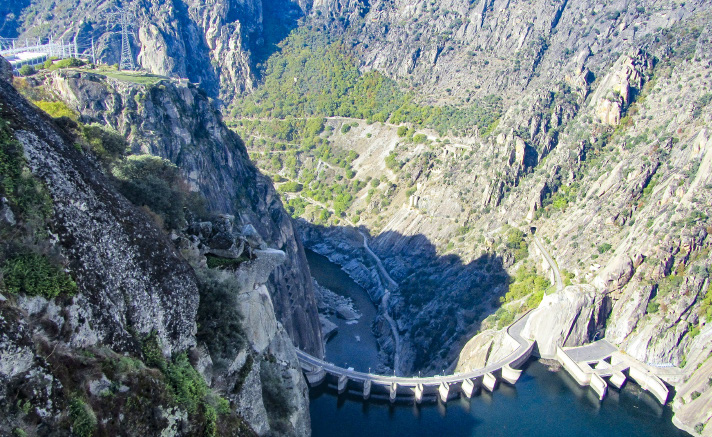
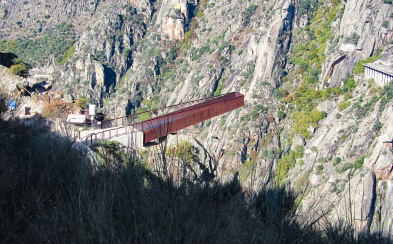
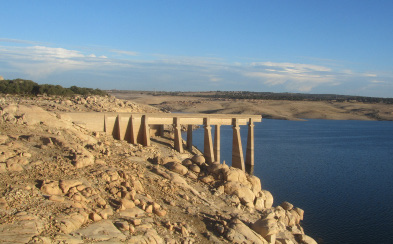
SALAMANCA OR THE END OF THE ADVENTURE.
The truth is that, almost without realizing it, we have passed to the province of Salamanca, where we will continue exploring Las Arribes, now in feminine, with its border trails and its vertiginous gorges, its wines and cheeses made from raw sheep's milk and its worthy historical sites.
Any "track" that we outline on the map will be a success, as long as we remain faithful to the aroma of wine and the daily struggle of the people. In the region of Vitigudino, the municipality of Villarino de los Aires reserves for us the pleasure of extending our winemaking route in Viña Romana, born as a cooperative in 1962 and which has evolved into a family concept under the guidance of its manager, José Luis Flores. This native of Bilbao always finds time to illustrate to his visitors the process of transforming grapes into wine and show us his creations, among them Solar de la Victoria, Heredad del Viejo Imperio or Botón Real.
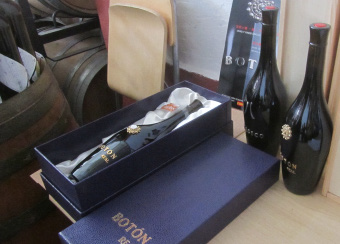
And we continue pulling the thread or, rather, the tongue, to the partners that make up the Arribes Wine Route, which, at this point, begins to look like a still life of Christmas products. We could not miss the oil and, taking advantage of the fact that the Tormes passes through Salamanca, we look at the municipality of Ahigal de los Aceiteros, which not in vain has that name next to the name of its river. Loli holds the reins of the first organic oil mill in Castilla y León, Aceiteros del Águeda (www.facebook.com/AceiterosdelAgueda), and is the spokeswoman for a group of olive growers - eleven capitalist partners - who are committed to promoting quality olive oil throughout the world, the offspring of tradition and the latest technologies. The taste and smell of the liquid gold prevail in the tastings organized by this gladiator of her own, who states that "the product has to defend itself". And it does stand up for itself. As she does every time she sings the goodness of the Zorzal de Arribes variety or celebrates the privilege of living in a natural environment.
And now, how to say goodbye to the Arribes Wine Route, after so many pleasant "hellos"? Perhaps with a story, a story that, as in the narrative mandate of Miguel Delibes, has everything: a man, a landscape and a passion. The man's name was Ángel de Dios; the landscape is the municipality of San Felices de los Gallegos, one of the historical sites of the province of Salamanca; and his passion was the castle that the Portuguese king Dionis ordered to be built back in the 13th century.
After visiting its oil museum, El lagar del mudo (www.ellagardelmudo.com), and admiring the dimensions of the parish church of Nuestra Señora de Entre Dos Álamos, we sat around an imaginary bonfire and listened to the true story of that farmer, Ángel del Río, who bought the castle from two neighbors of the village to prevent them from demolishing it and using the stone for houses. Years later, two American investors came to the village and offered him a fortune to take it to their country, but he refused, because, without his castle, San Felices would no longer be San Felices, it would cease to exist (and remember that "only things that cannot be lost exist"). His son, Francisco, became a priest and continued to defend the legacy and the will of his father until the fortress, ceded to the municipality and restored by the Historical Heritage Foundation of Castilla y León, was put in safekeeping. Today, the castle is a joy to behold for the people of San Felipe and for anyone who stops along the way to reflect on time and its wonders from the top of its keep.
We said that this route was made by and for people, and we were right. Also for those who are no longer here and for those who will come tomorrow.
Alberto de Frutos

